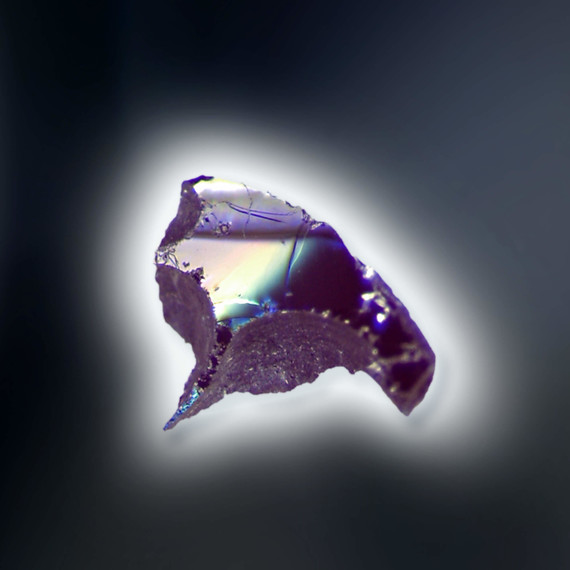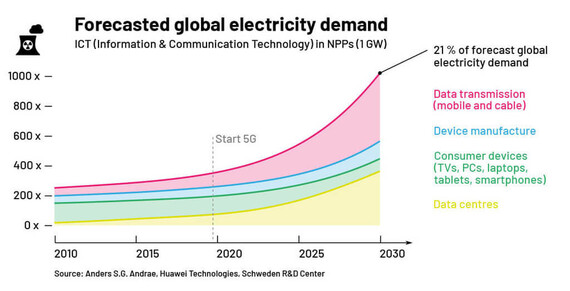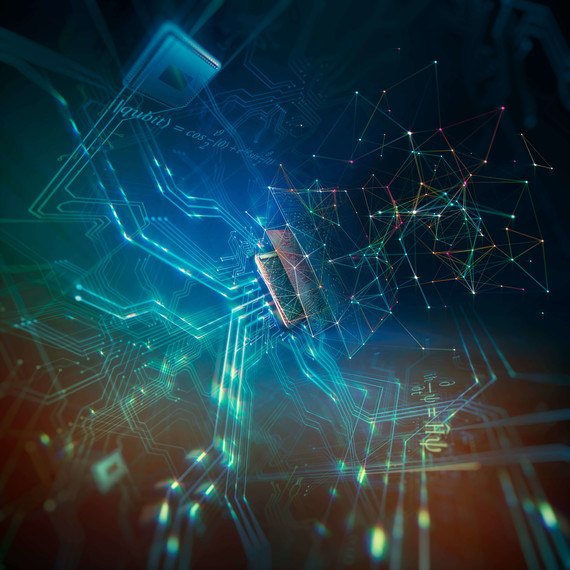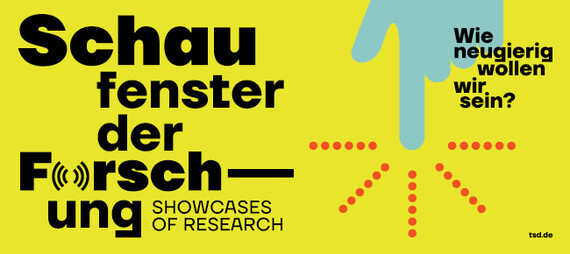Showcase - Insight into our Research
We explore the future! The scientists of ct.qmat are investigating the puzzles of quantum materials. What groundbreaking results they reveal and why extreme conditions prevail in our high-performance laboratories – this SHOWCASE will provide you with a fascinating insight. You can navigate through the main topic fields on this page and find out what we are currently working on. The links to background knowledge that we have prepared for you will give you a deeper introduction in an entertaining way. Take a look and explore the world of quantum materials!
Quantum Matter – Advancing to New Dimensions

Ultra-low temperatures, super-strong magnetic fields, enormous pressure – the search for novel materials of the 21st century is taking place under extreme conditions. Only then do quantum materials reveal their undiscovered abilities that promise ground-breaking potential. Like a revolutionary generation of superfast quantum chips that hardly consume energy and have gigantic storage capacities. In high-performance labs, scientists of the Cluster of Excellence ct.qmat – Complexity and Topology in Quantum Matter are therefore conducting intense research to further decipher the quantum world, to discover hitherto unknown substances and utilise them for daily life. A physicist from the Cluster of Excellence detected the first topological quantum material in 2007, thus opening the new field of research. Today, ct.qmat is part of a global scientific community designing the future atom by atom.
Computers heat up, and not too little. But overheating makes the technology weak. That's why Google's computer farms are gigantic cold chambers. After all, around 300 search queries could already make a liter of water boil–and on average, the search engine receives around 3.5 billion requests per day (as of 12/19). That is a lot of wasted energy! The more environmentally friendly solution: cold chips, powerful, energy-efficient, without losing heat. Hopes are pinned on a new class of materials – topological insulators, a research area of the Cluster of Excellence ct.qmat.

Quantum Computer - the Holy Grail

The competition for the quantum computer is in full swing. The high-tech industry and a huge scientific community are working on different ways to achieve one goal: the "next big thing" that will change the world. Artificial intelligence and machine learning are areas that quantum computing could help to achieve a breakthrough.
Quantum computers encode information as qubits. While a classical bit has only the states 0 and 1, a qubit can have a superposition - one of an infinite number of intermediate states. But these states are extremely fragile and decay rapidly. This is where topology comes into play: Its mechanisms are designed to stabilize superposed quantum states – as a prerequisite for extremely powerful quantum computers.
How are whirls and doughnuts related to quantum physics? To answer this question, we need to turn to topology – a branch of mathematics. It deals with the global properties of geometric structures that are preserved under continuous deformation. A whirlwind, for example, turns into a hurricane without changing its direction of rotation: that is a topological property.
Topology provides an explanation of the inner workings of quantum materials. Such materials can be described by means of waves on a geometric structure shaped like a doughnut. As early as 1982, a later Nobel Prize winner discovered that these waves can exhibit whirls that fundamentally alter the properties of the material. For example, electric current can be conducted without loss on the surface. Despite this, topology initially remained a niche subject in physics only experiencing a boom from 2005 onwards. Today it is a universally valid concept to better understand the states of matter (solid, liquid, gaseous...). In 2016, the pioneers of topological physics were rewarded with the Nobel Prize. Today, topological quantum materials are designed on the computer, equipped with tailor-made properties and produced in the laboratory.

Is the cloak of invisibility just a matter of time? Will future computers work with light? Scientists in high-tech laboratories are seeking answers to these questions, designing new materials that could substantially change our lives. Tailor-made for their particular purpose. These artificially created metamaterials have sophisticated structures with optical, electrical, magnetic or mechanical properties that do not exist – or cannot exist at all – in nature. These physical effects promise novel applications. For example, a spatially different refractive index could make light waves circumvent the core of such a metamaterial – and make the object inside invisible. That is still science fiction, but researchers are convinced that it is not impossible. By now, individual colors of light can be deflected to create a cloak of invisibility for red light, for instance.
Each magnet has a north and a south pole. Identical poles repel each other, opposite ones attract. If three magnets meet, they cannot create an ideal state. They have to find a compromise – and that is frustrating! If there is a large number of frustrated magnets, the overall system reacts very sensitively to the tiniest additional influences. A draft, a vibration, or the iron clasp of a bag being carried past are already enough to have such an effect. In the end, all this results in a random arrangement of magnets that has never been seen before. This effect can also be observed inside quantum materials. On the level of atoms, elementary magnets – electron spins – whirl about and seek the perfect position to each other, but the special structure of the crystal lattice doesn’t allow this. The tiny elementary magnets are frustrated. The interplay of billions of particles now leads to states of compromise that possess entirely new collective properties. In this way, exotic particles emerge in frustrated magnets – e.g. Majorana fermions, possible building blocks for topological quantum computers.
Explore the Quantum World

… at the special exhibition SHOWCASE OF RESEARCH at the Technische Sammlungen Dresden. Seven interactive exhibits from a hairy doughnut to a topological coffee set invite you to join in and to playfully discover, explore, and understand this mysterious world:
Quantum Materials – Advancing to New Dimensions
12 Sept, 2020–31 Dec, 2024
Technische Sammlungen Dresden
Junghansstraße 1-3, 01277 Dresden
An exhibition at the Technische Sammlungen Dresden in cooperation with the Dresden-Würzburg Cluster of Excellence ct.qmat - Complexity and Topology in Quantum Matter, the Barkhausen Institute as well as DRESDEN-concept and the City of Dresden.

